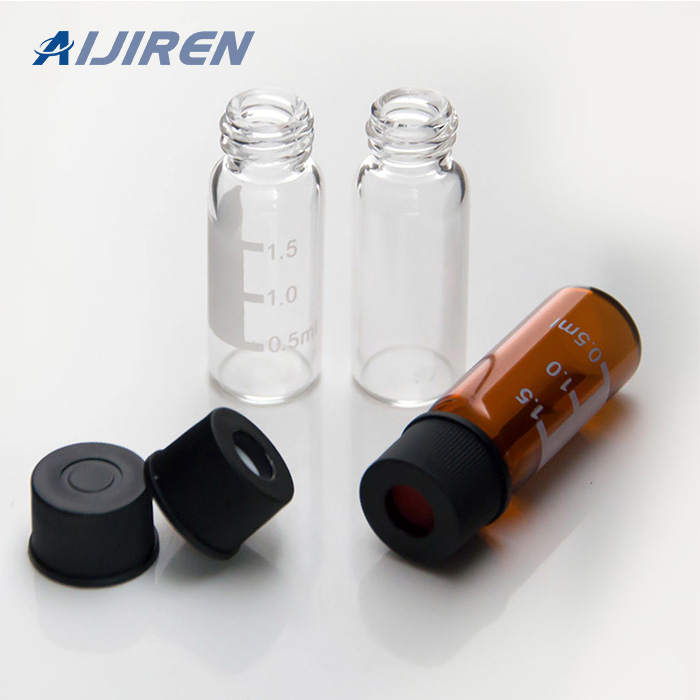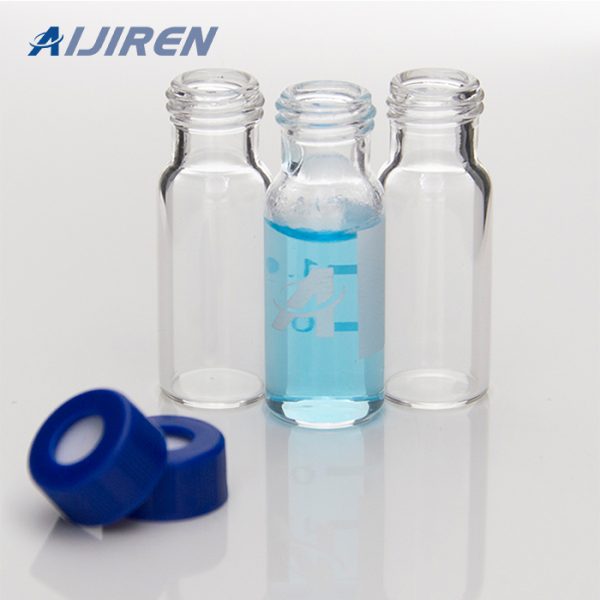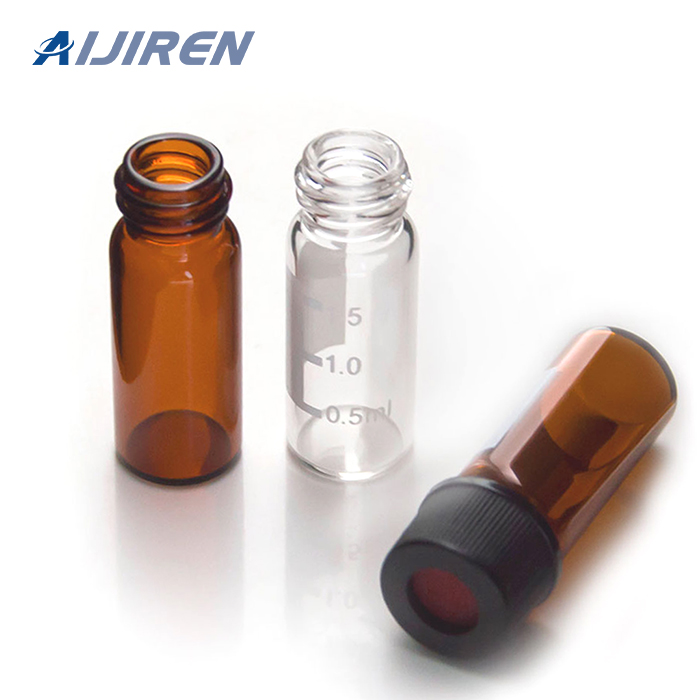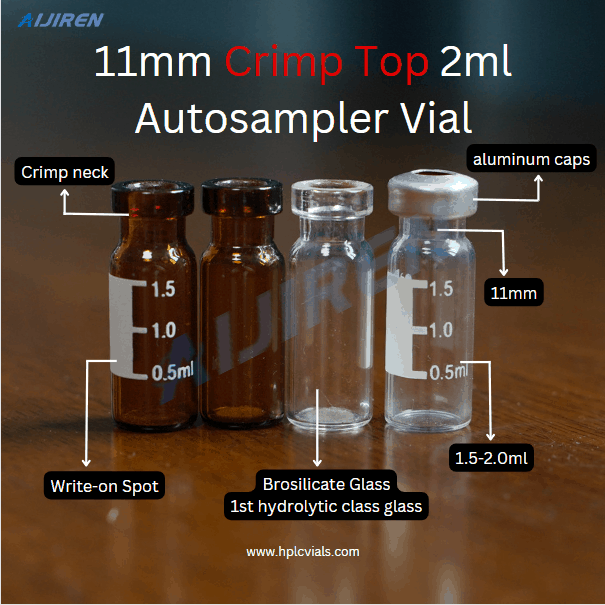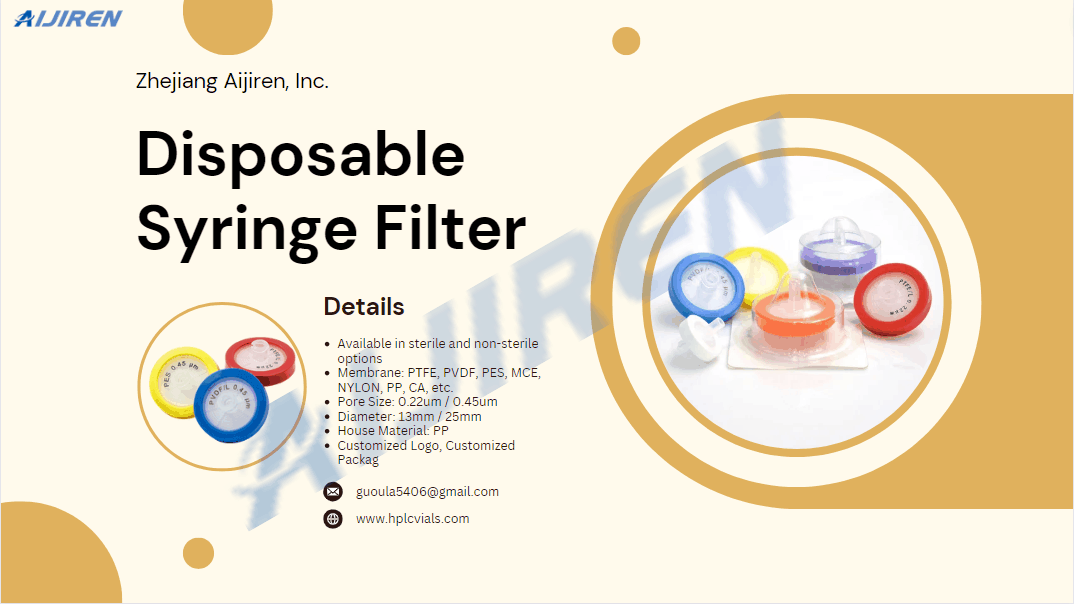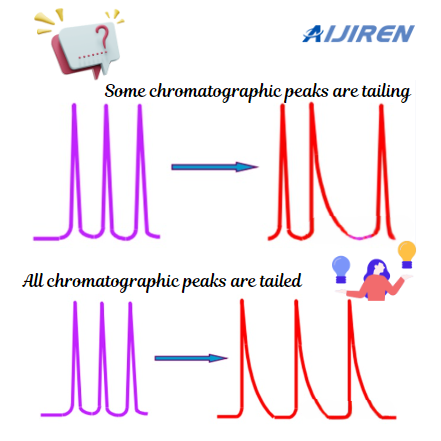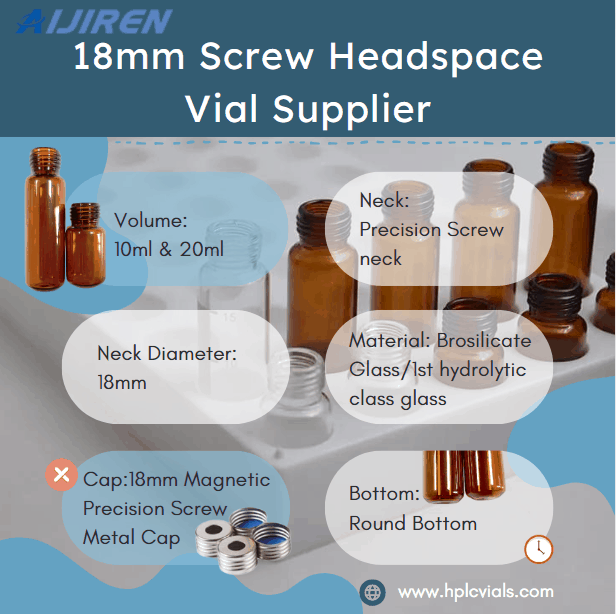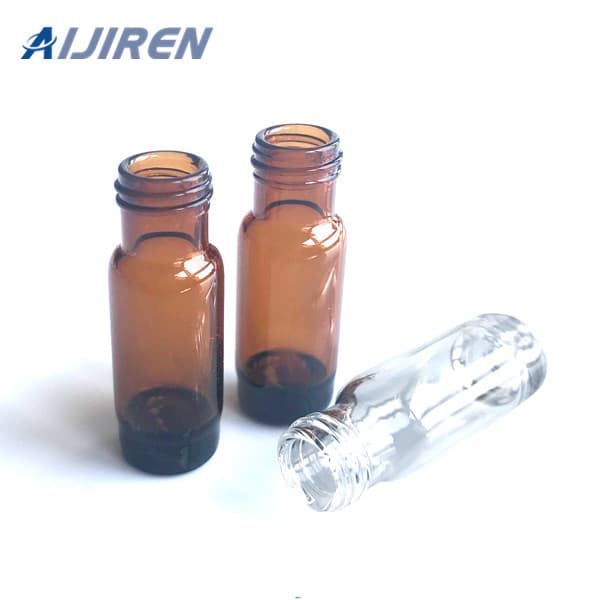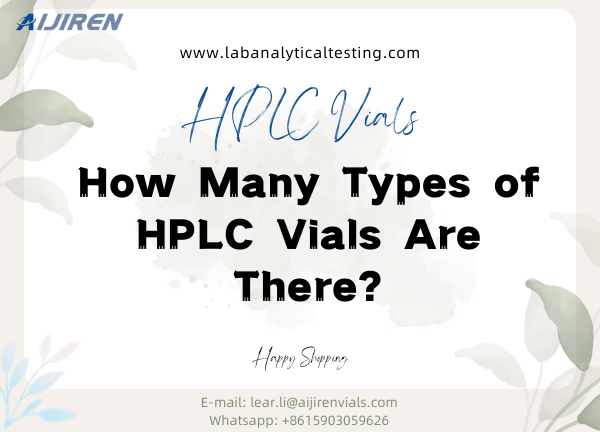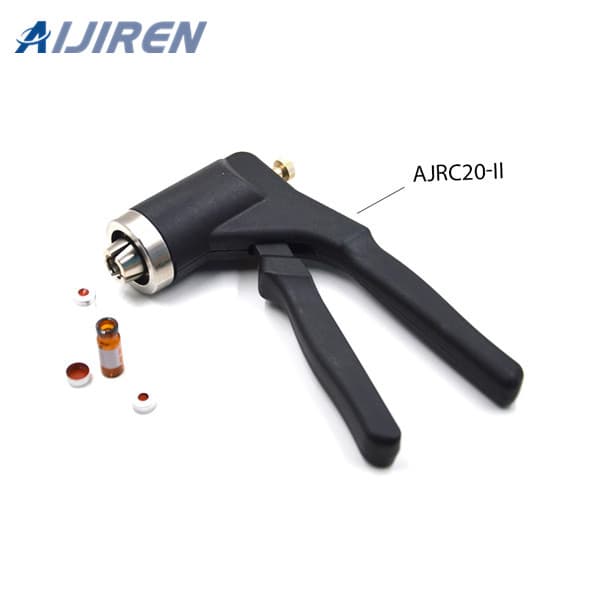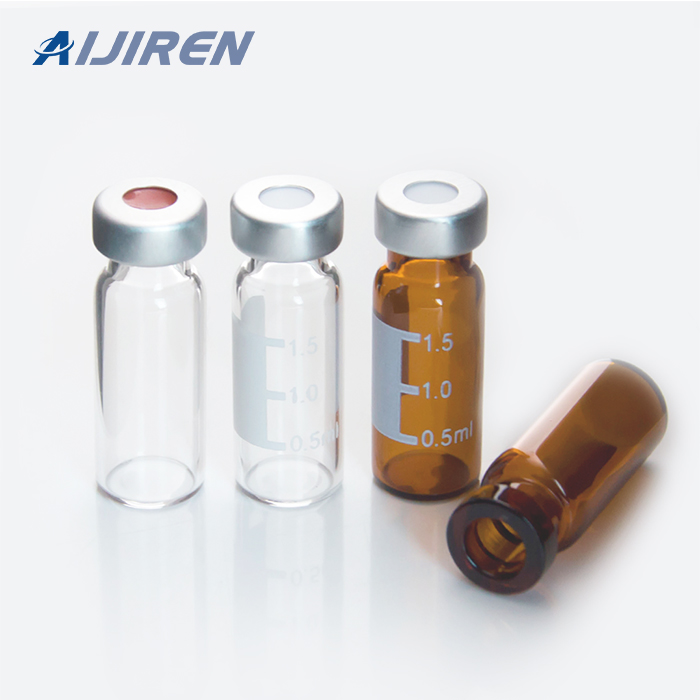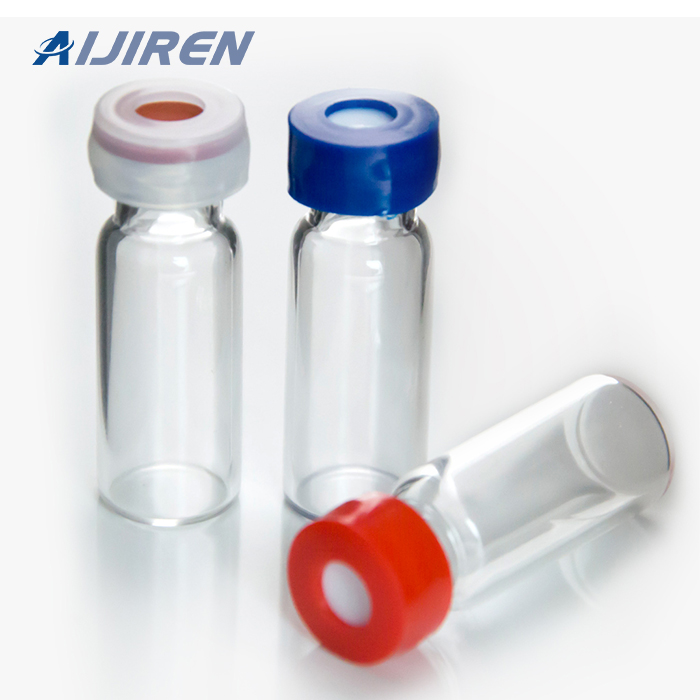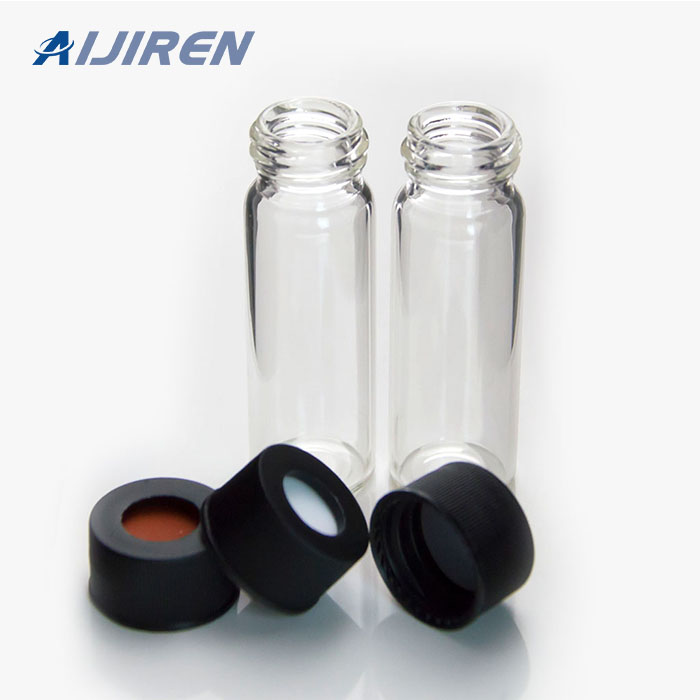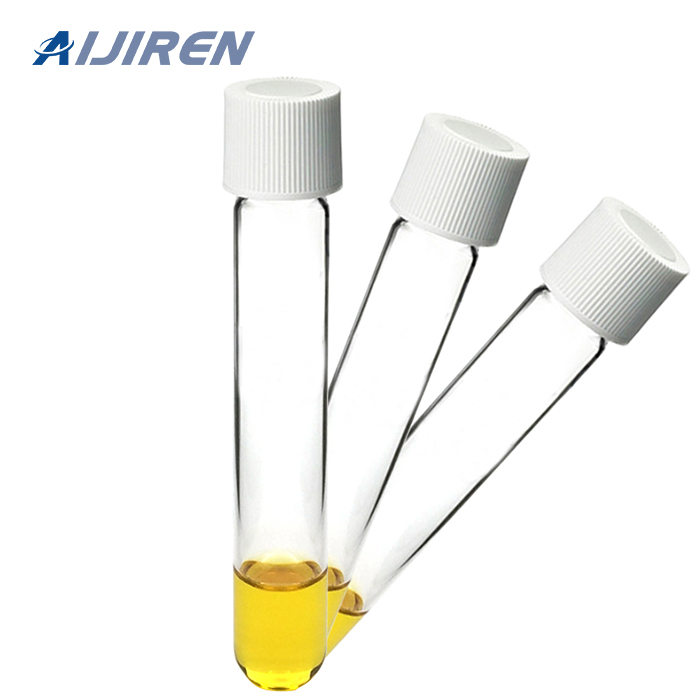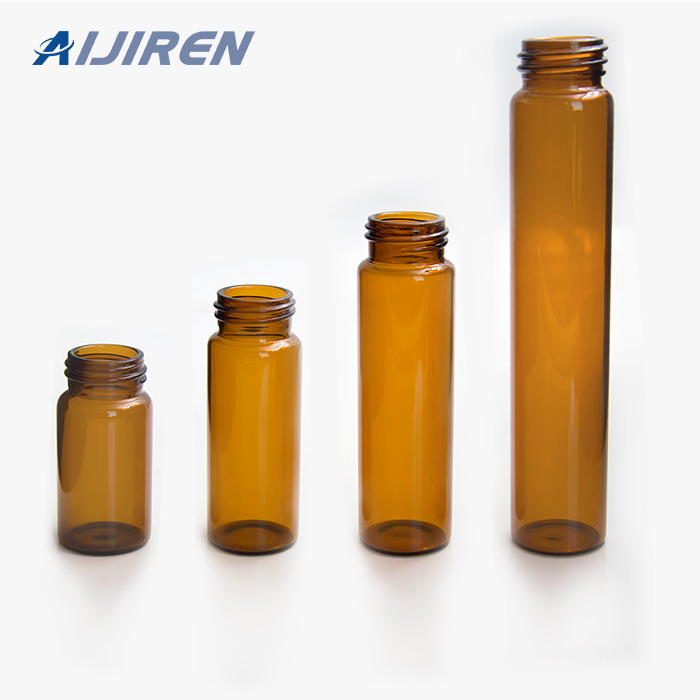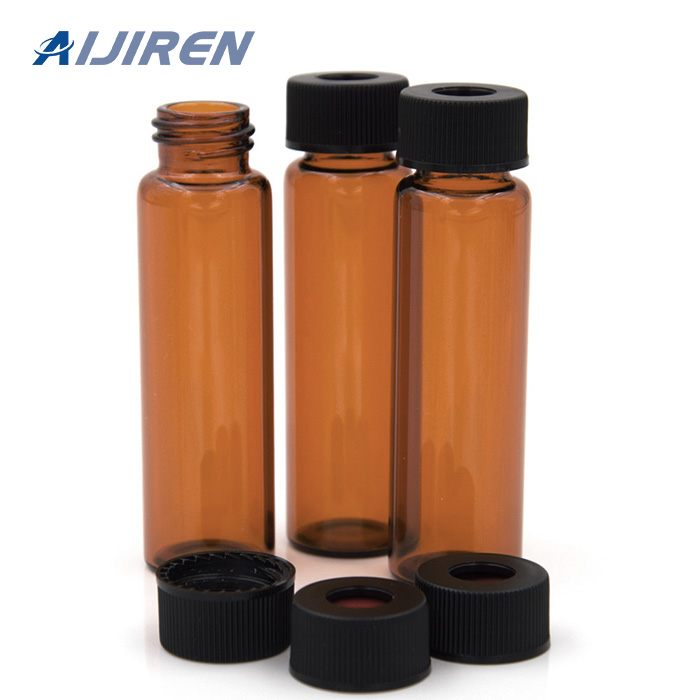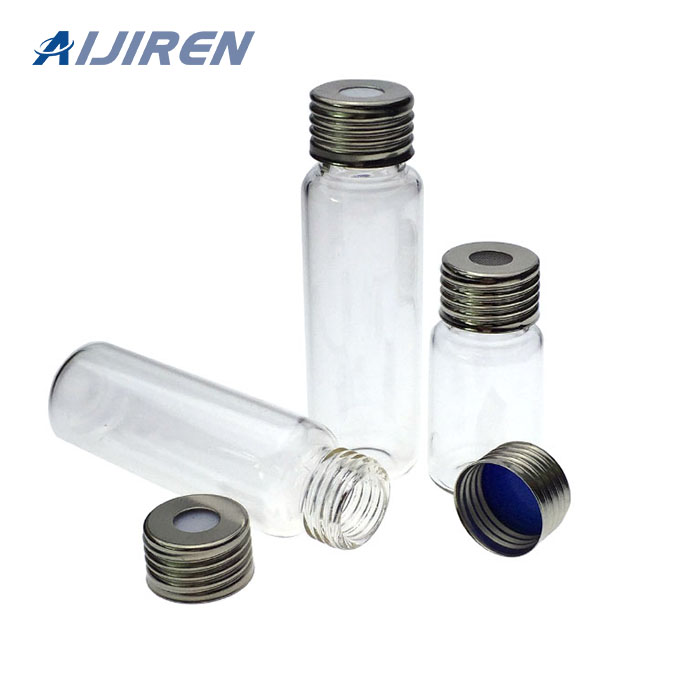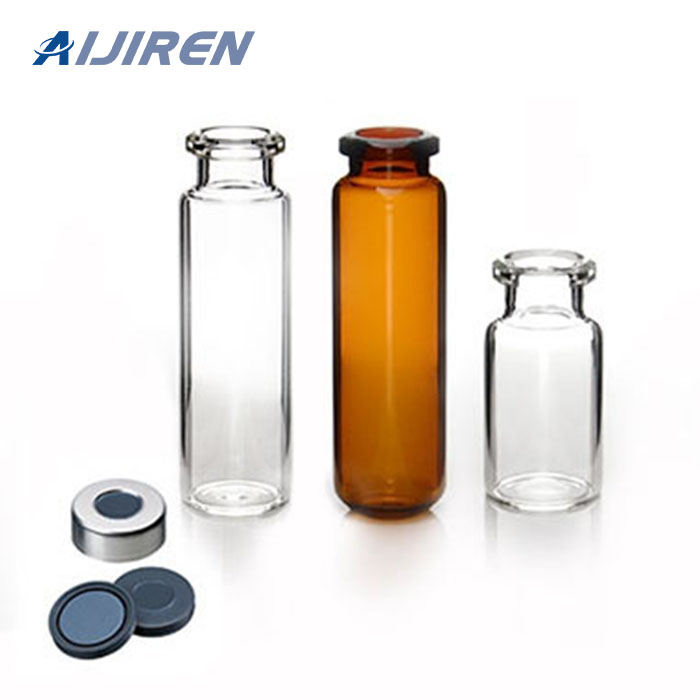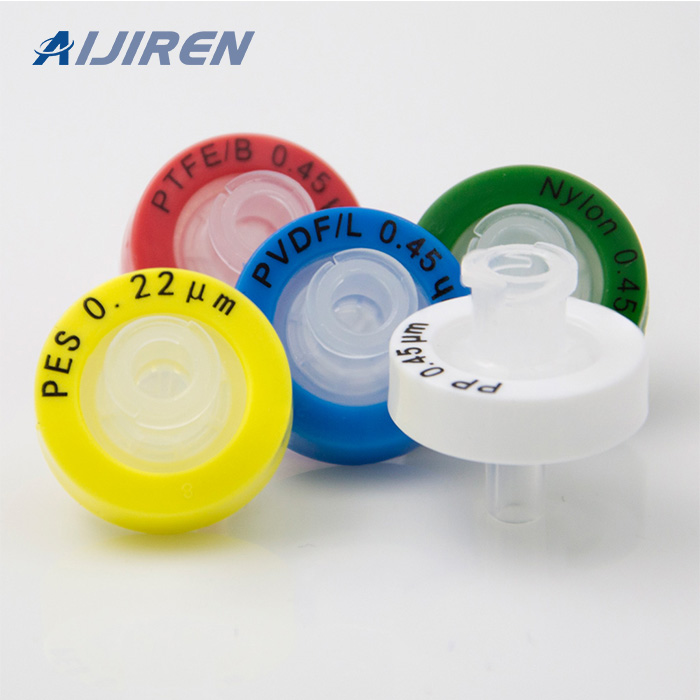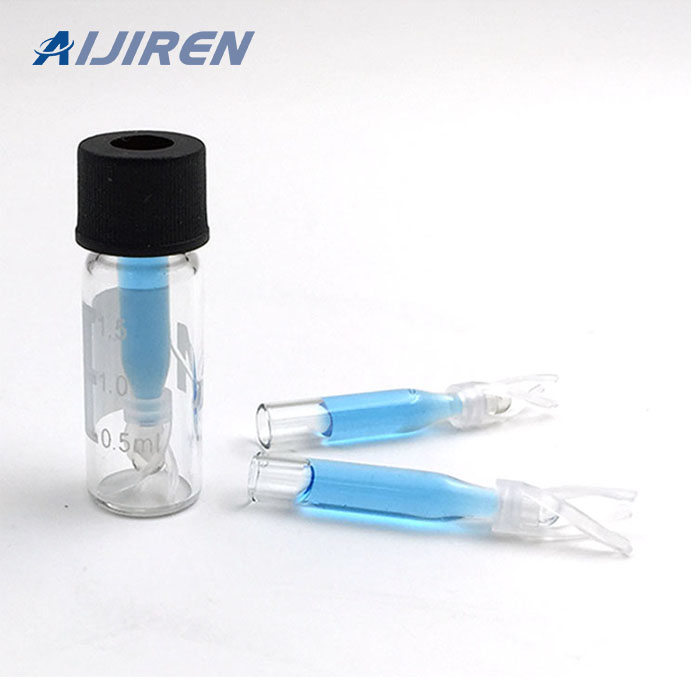Headspace vials are specialized containers used in analytical chemistry, particularly in gas chromatography (GC) and gas chromatography-mass spectrometry (GC-MS) applications. These vials are designed to contain both the sample and the headspace, which is the space above the sample in the container.
The headspace vial is typically sealed with a septum cap that allows for the introduction of a syringe needle. This design enables the withdrawal of a gaseous sample (the headspace) without disturbing the liquid or solid sample in the vial. The headspace contains volatile organic compounds (VOCs) that can be analyzed using GC or GC-MS techniques.
Headspace Vials:
- Volatile Compound Analysis: Headspace vials are commonly used to analyze volatile organic compounds (VOCs) in various samples, such as environmental samples, food and beverage samples, pharmaceuticals, and more.
- Quality Control: They are also used in quality control and assurance processes to ensure the purity and safety of products, such as detecting residual solvents in pharmaceuticals or contaminants in food and beverages.
- Drug Testing: In forensic and clinical settings, headspace vials can be used to analyze biological samples, such as blood or urine, for the presence of volatile compounds, including drugs and metabolites.
- Environmental Monitoring: They are used in environmental monitoring programs to analyze air, water, and soil samples for the presence of volatile pollutants and contaminants.
- Key Features:
- Material: Headspace vials are typically made of glass, either clear or amber, to allow for visual inspection of the sample and to protect light-sensitive samples.
- Septum Cap: The vial is sealed with a septum cap, which can be pierced with a syringe needle for sample withdrawal and injection into the GC system.
- Volume: Headspace vials are available in various sizes, with the most common sizes being 10 mL and 20 mL, depending on the specific requirements of the analysis.
In summary, headspace vials are specialized containers designed for the analysis of volatile compounds in samples using GC or GC-MS techniques, providing a reliable and efficient method for the detection and quantification of VOCs in various applications.
Both 18 mm screw and 20 mm crimp vials are commonly used in chromatography applications, such as gas chromatography (GC) and high-performance liquid chromatography (HPLC), for the storage and analysis of samples. However, there are key differences between these two types of vials:
18 mm Screw Vials:
- Closure Mechanism: These vials are sealed using a screw cap. The cap is threaded onto the vial, providing a secure seal.
- Reusability: Screw vials are typically designed for single-use, although they can sometimes be reused if necessary.
- Ease of Use: Screw caps can be easier to handle and manipulate, especially when compared to crimp vials which require a crimping tool.
- Seal Integrity: The screw cap provides a reliable seal, but it may not always be as secure as the seal provided by a crimp cap, especially for very volatile samples.
- Applications: Screw vials are suitable for a wide range of applications, including routine analyses where high precision is not always required.
20 mm Crimp Vials:
- Closure Mechanism: These vials are sealed using a crimp cap, which is secured onto the vial using a crimping tool. This creates a more secure seal compared to screw vials.
- Seal Integrity: Crimp caps provide a more reliable and secure seal, making them suitable for volatile samples or when high precision and sample integrity are essential.
- Reusability: Crimp vials are typically designed for single-use, and reusing them is not recommended due to potential seal integrity issues.
- Compatibility: Crimp vials are often used in applications where the sample must be securely sealed and there is a need for high sample integrity, such as trace analysis or when analyzing volatile compounds.
In summary, the choice between 18 mm screw vials and 20 mm crimp vials depends on the specific requirements of the analysis, including the type of sample, the sensitivity of the analysis, and the desired seal integrity.

